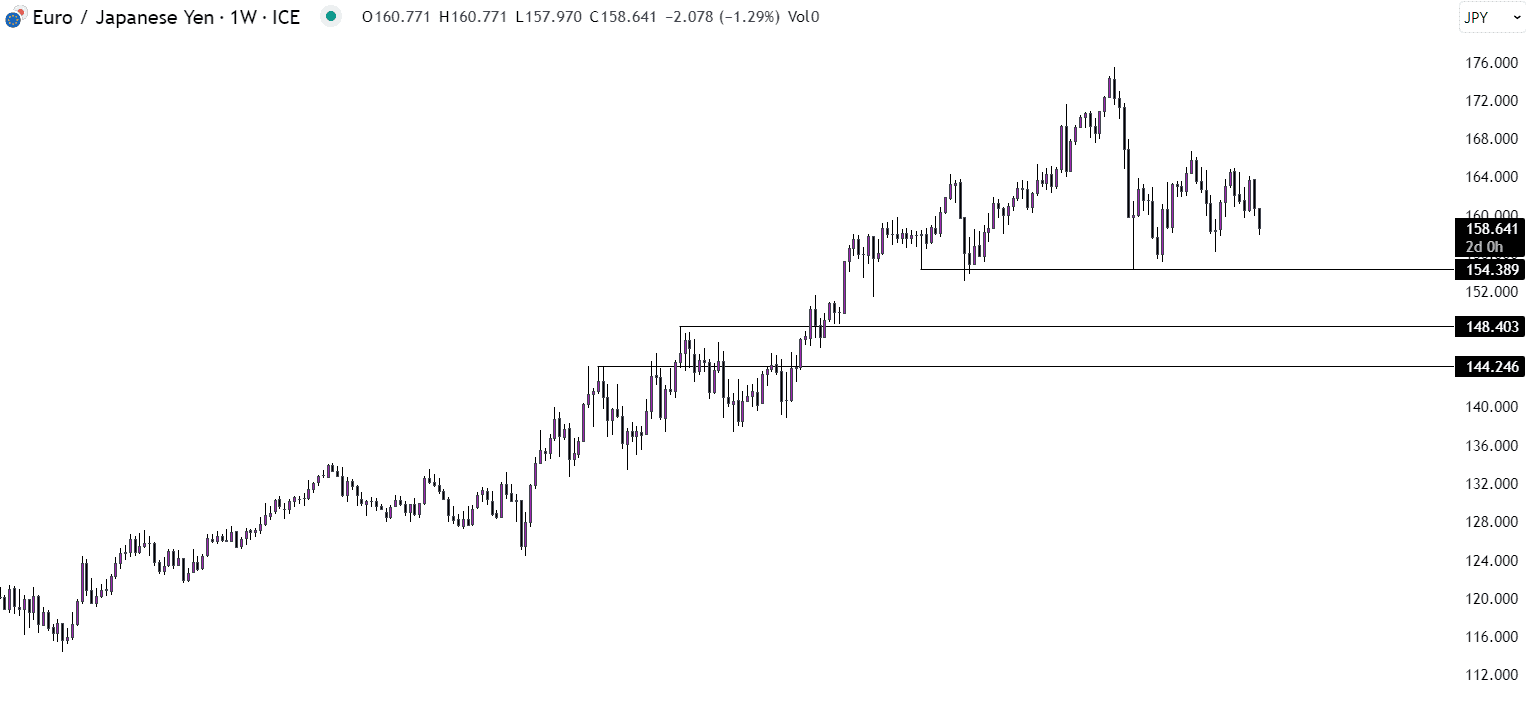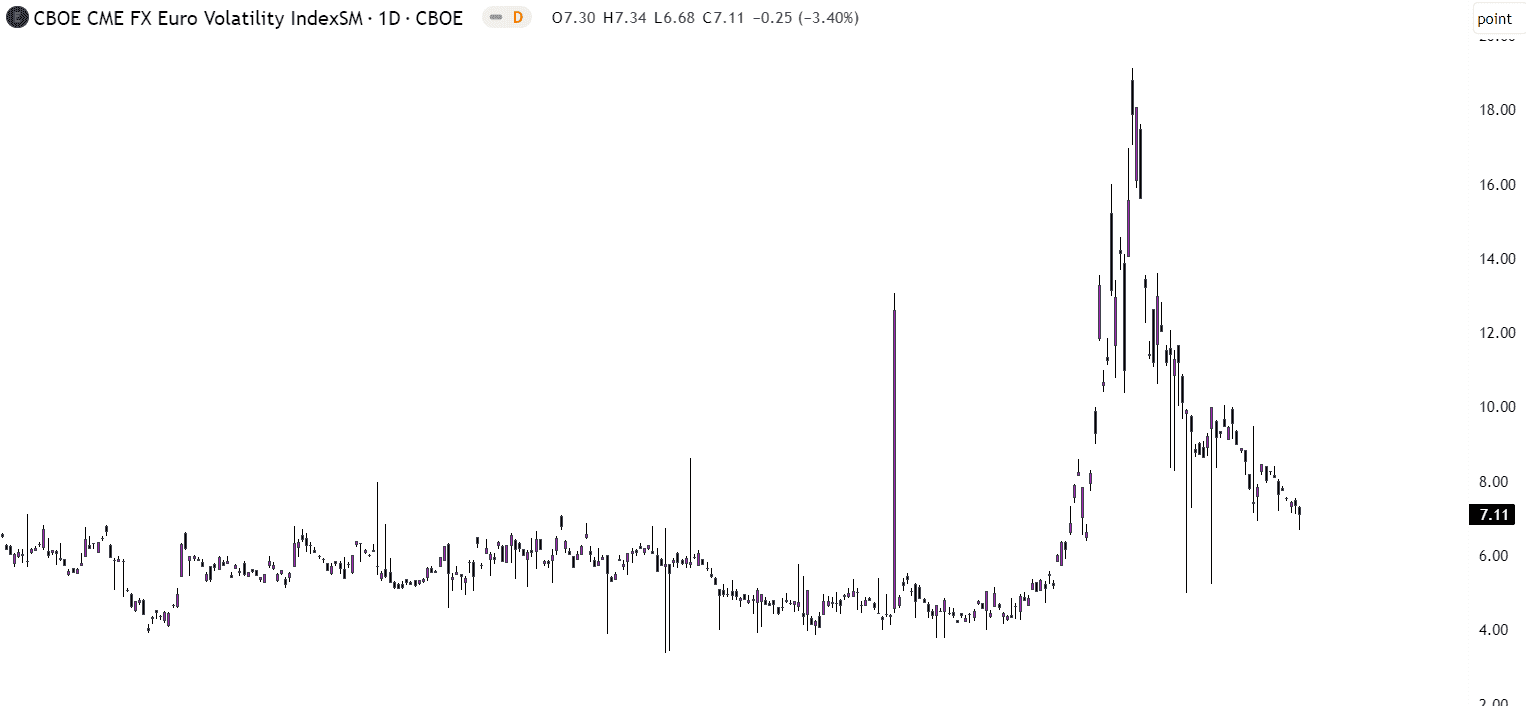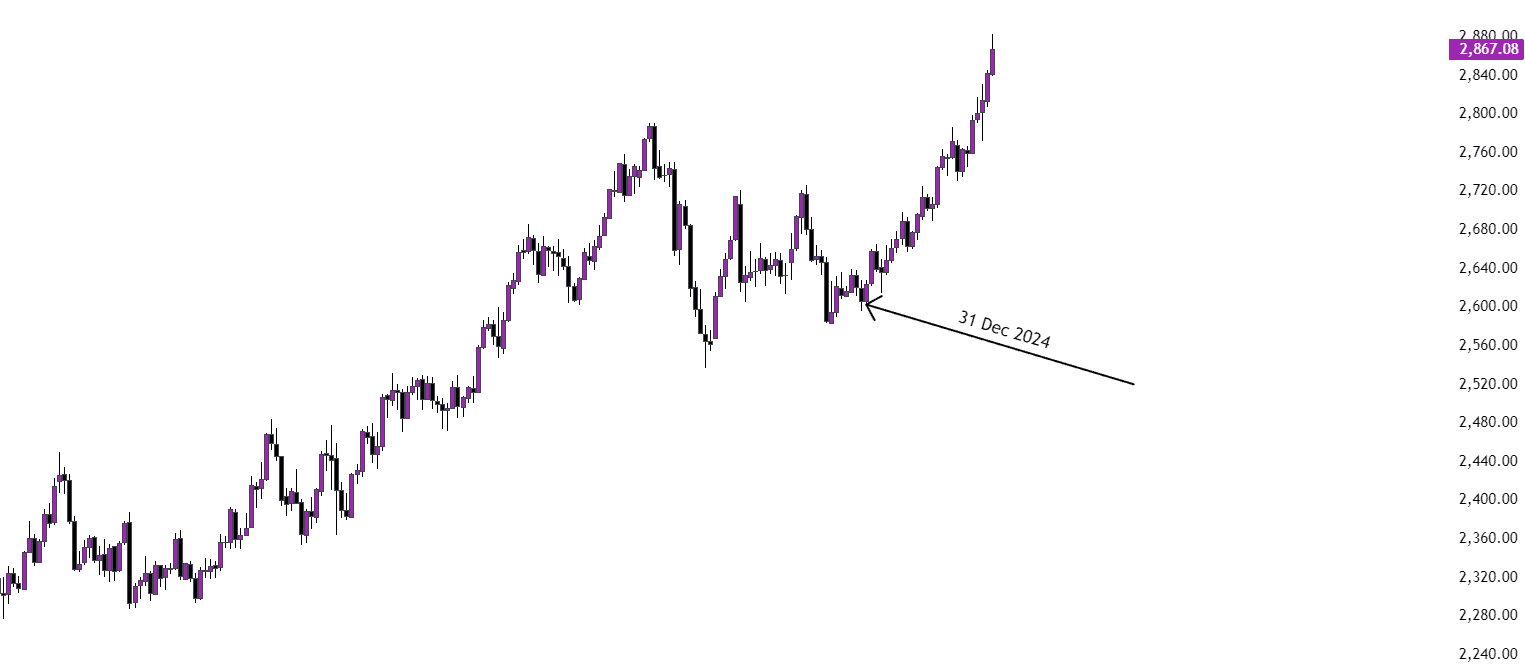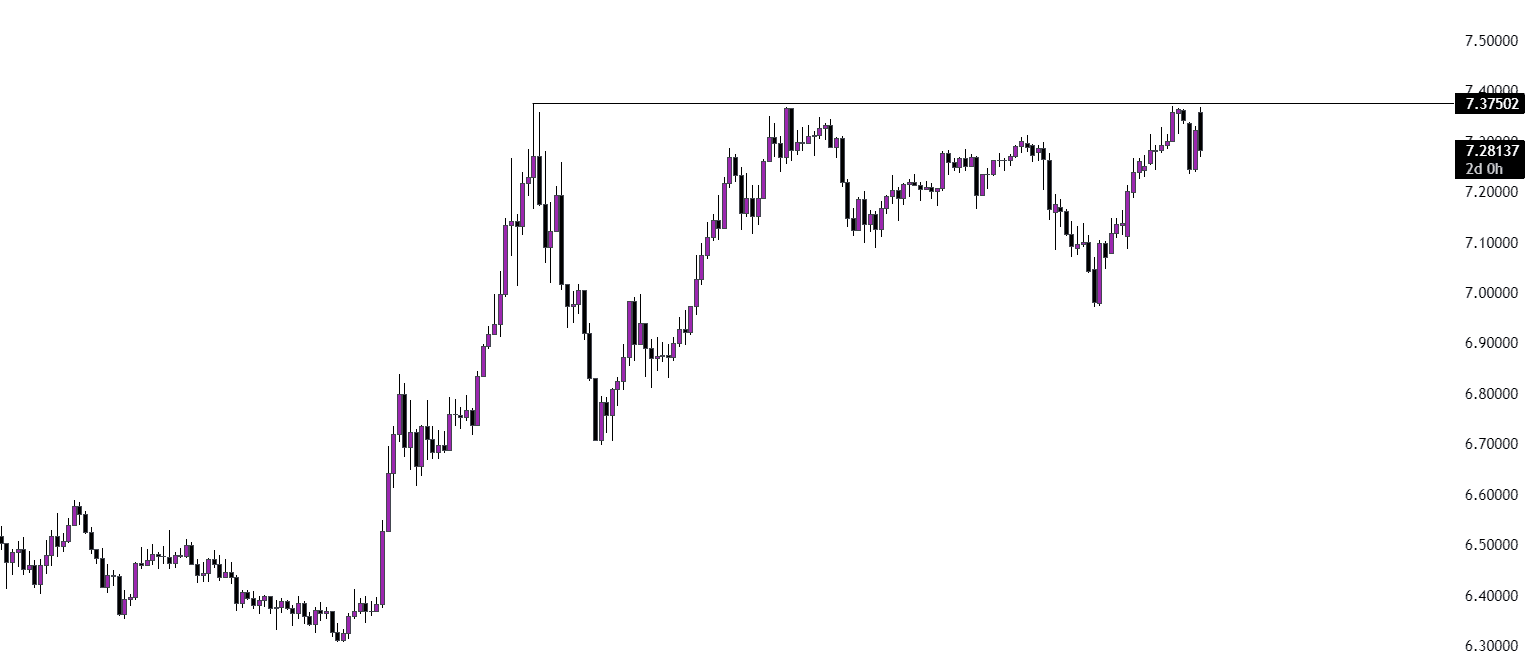Strategic View: Planning For 2025

Read Time: 7 - 9 Minutes.
There’s already been some fantastic volatility in the forex market this year – mainly attributed to Trump, but also ongoing discussions around monetary policy in key economies.
Even if you’re a short-term trader, it’s important to look ahead and form a strategy for the year. There’s currently a convergence of high U.S. real yields, central bank policies, and geopolitical risks that all traders need to keep on their radar.
In this post, we will discuss the current themes for 2025, as well as identify ways in which we could capitalise on them.
The dominant theme in the FX market this year is the continued strength of the U.S. dollar (USD), fuelled by not only by Trump, but also high real interest rates and economic divergences.
Following what’s called the "red sweep" in the 2024 U.S. elections, markets have shifted expectations towards persistent USD strength in the first half of the year.
There’s several factors contributing to this trend:
- High U.S. Real Yields: Elevated interest rates in the U.S. continue to attract capital inflows, ultimately reinforcing the greenback’s strength.
- Diverging Monetary Policies: Whilst the Federal Reserve remains cautious about rate cuts, the European Central Bank (ECB) and Bank of Japan (BOJ) are expected to ease policy further.
- Tariff Risks and Trade Policies: Anyone watching the headlines would be aware of Trump’s recent rampage on tariffs – these new tariffs could further support the USD by dampening foreign currency demand.
Volatility Strategies will be the play here, with policy uncertainty and trade negotiations in the air, options-based strategies such as straddles or volatility swaps on USD pairs could become very attractive.
With real interest rate differentials widening, carry trades remain a key theme in 2025. The market is favouring currencies with strong yield advantages, such as the U.S. dollar and select emerging market (EM) currencies.
Key High-Yield Currencies:
- USD: The dollar’s rate advantage makes it a prime funding currency.
- CAD: Despite trade risks, Canada’s interest rate environment remains somewhat supportive.
- NOK: The Norwegian Krone has shown improved carry appeal, as a result of Norges Bank resisting an aggressive approach to rate cuts.
Trading Strategies:
- Long USD/MXN or USD/ZAR: With emerging market currencies under pressure due to trade risks and high U.S. rates, going long USD against the Mexican Peso (MXN) and South African Rand (ZAR) could prove to be profitable.
- Short CHF or JPY in Carry Trades: Both the Swiss Franc and Japanese Yen are likely to underperform against high-yielding currencies due to negative real rates. This could provide some attractive carry trade opportunities.
- NOK/SEK Call Spread: As Norway’s interest rate stance is firmer than Sweden’s, NOK/SEK longs could offer potential upside.
The euro (EUR) remains vulnerable this year due to a combination of economic underperformance and political instability.
Key Risks for the EUR:
- Interest Rate Divergence: The ECB is expected to continue cutting rates, whereas the Fed remains on hold, for now.
- Trade War Exposure: Europe is a primary target for new U.S. tariffs, which could add to the weakening of the Euro.
- German and French Political Uncertainty: Domestic political risks, including German elections and policy uncertainty in France, add further downside pressure to the euro.
Trade Idea:
Short EUR/JPY

Figure 1 – EURJPY Weekly Chart
Given Japan’s relatively stable policy outlook and Europe’s tariff risk, going short EUR/JPY remains a key trade.
Long EUR Volatility

Figure 2 – Euro Volatility Index, daily chart
For options traders, the euro’s downside risks make long volatility positions an attractive hedge against geopolitical shocks.
Commodity-linked currencies such as the Australian Dollar, Canadian Dollar, and Norwegian Krone face some unique opportunities in 2025.
The Oil Market’s Influence on FX
Analysts are expecting crude oil markets to remain tight, with OPEC aiming to balance the supply and demand. In doing so, this could lend support to oil-linked currencies such as CAD and NOK, provided that global demand remains resilient.
Gold and Safe-Haven Flows

Figure 3 – XAUUSD (gold), daily chart
Gold prices have surged in early 2025 – driven by fears of tariffs, geopolitical tensions, and central bank buying. Whilst this supports the Australian Dollar to some extent, rising U.S. yields could ultimately cap AUD/USD upside.
Trade Ideas:
- Long USD/CAD on Tariff Risks: The potential for broad U.S. tariffs on Canada could weaken the CAD, making long USD/CAD a defensive play over the long-term, especially given the bullish strength of the USD.
- Long Gold as a Hedge: With tariff risks escalating, gold remains a strong hedge opportunity against geopolitical uncertainty.
Beyond macroeconomic fundamentals, geopolitical risks continue to hold the FX market at ransom in 2025. There’s potential for volatility to stem from:
- U.S.-China Trade Tensions: Renewed tensions from Trump could weigh on the Chinese Yuan (CNY) and ultimately spill over to other Asian FX markets, such as the AUD and NZD.
- European Political Shocks: Elections in Germany and France could provide sharp moves in the EUR.
- Middle East and Energy Market Risks: Any disruptions to oil supply chains would adversely affect energy-linked currencies, such as the CAD.
Trade Idea:
Long USD/CNH

Figure 4 – USDCNH, weekly chart
Continued pressure on the Chinese economy and potential U.S. tariffs could push USD/CNH higher. It would be wise to look for long opportunities above 7.375.
As we take on 2025, having an understanding of the key macroeconomic drivers, central bank policies, and geopolitical risks is no longer ideal, but necessary.
- USD strength remains a dominant theme, with potential for reversals in Q3 & Q4 this year.. providing that the Fed pivots.
- Carry trade opportunities favour high-yielding currencies, whilst funding currencies like JPY and CHF face ongoing pressure.
- The euro still remains vulnerable as a result of policy divergences and political uncertainty.
- Commodity currencies require a more careful approach – with CAD and NOK benefiting from oil strength, whilst AUD could be exposed to further downside risks.
- Geopolitical tensions add more ammunition to FX volatility – with the potential to either create more trading opportunities, or disrupt market structure.
By keeping these key themes in mind, we’re able to form a more structured approach to 2025. Whilst there’s been some appealing moves in the market so far, there’s still plenty of room for trend changes and unexpected volatility. The key going forward is to stick to your trading plan, but expect the unexpected – especially as we begin to see the economic effects of Trumps’ executive orders.
If you haven’t done so already, check out our post on Economic Indicators here.
We’ll never share your email with third-parties. Opt-out anytime.